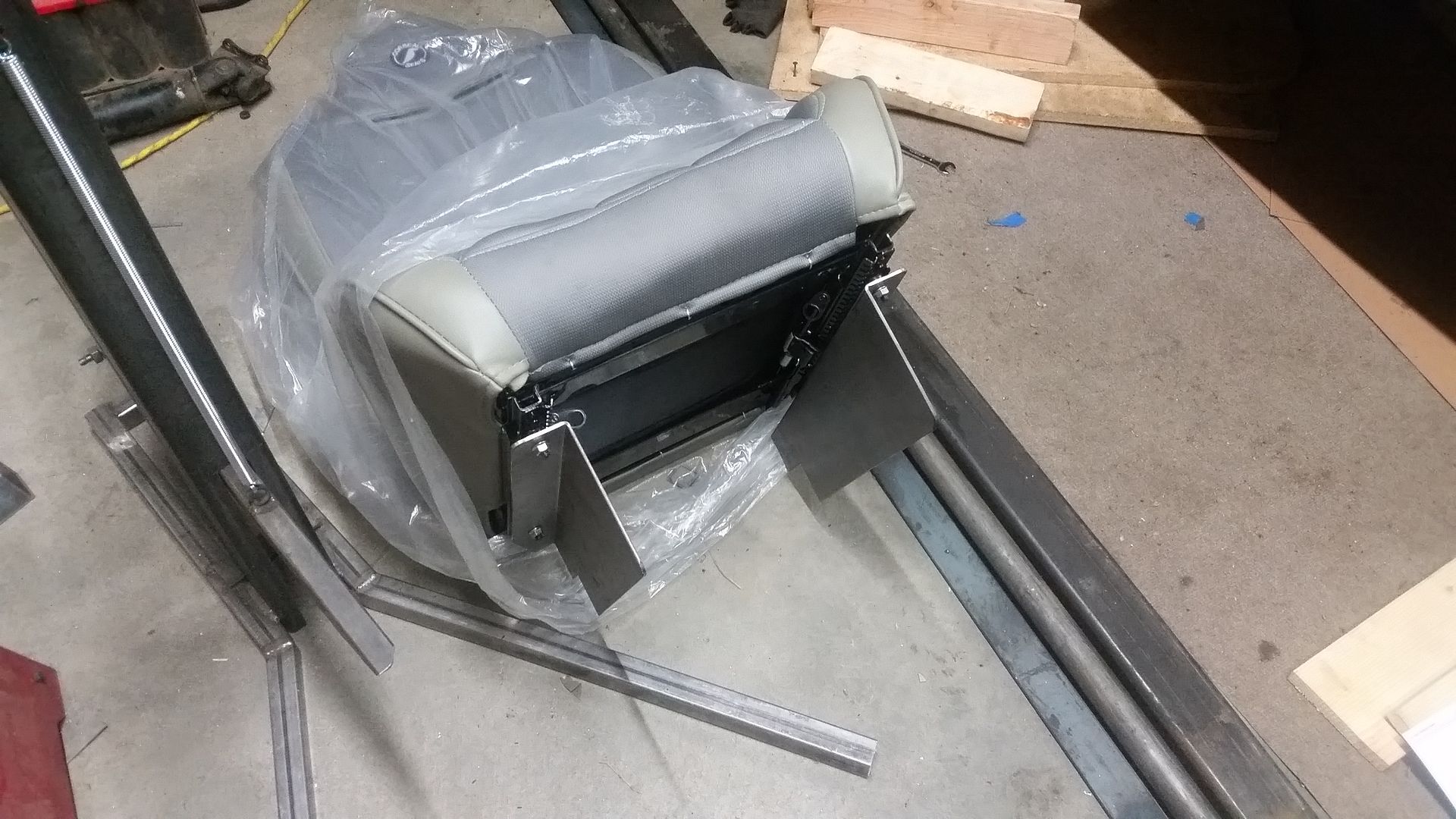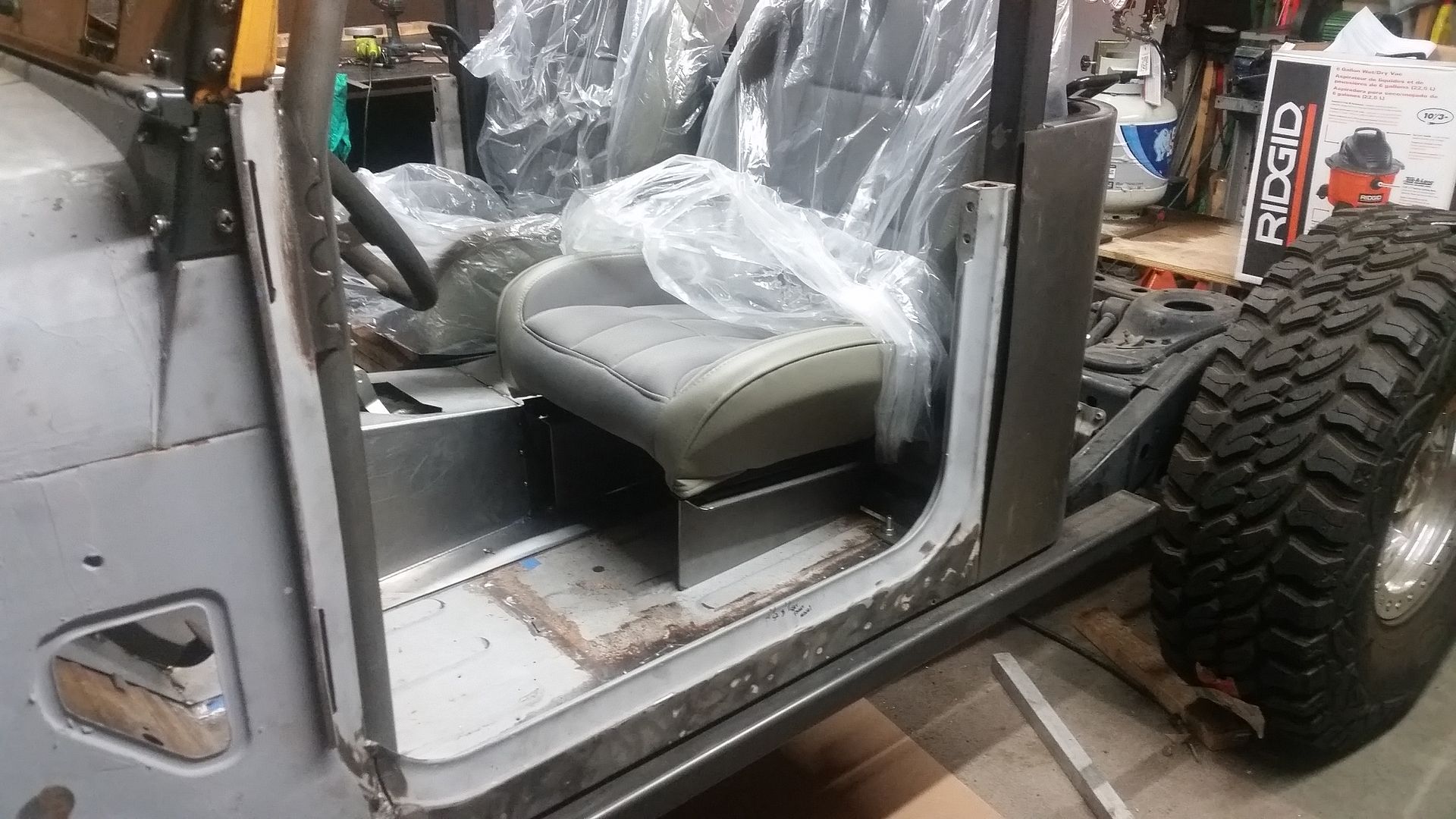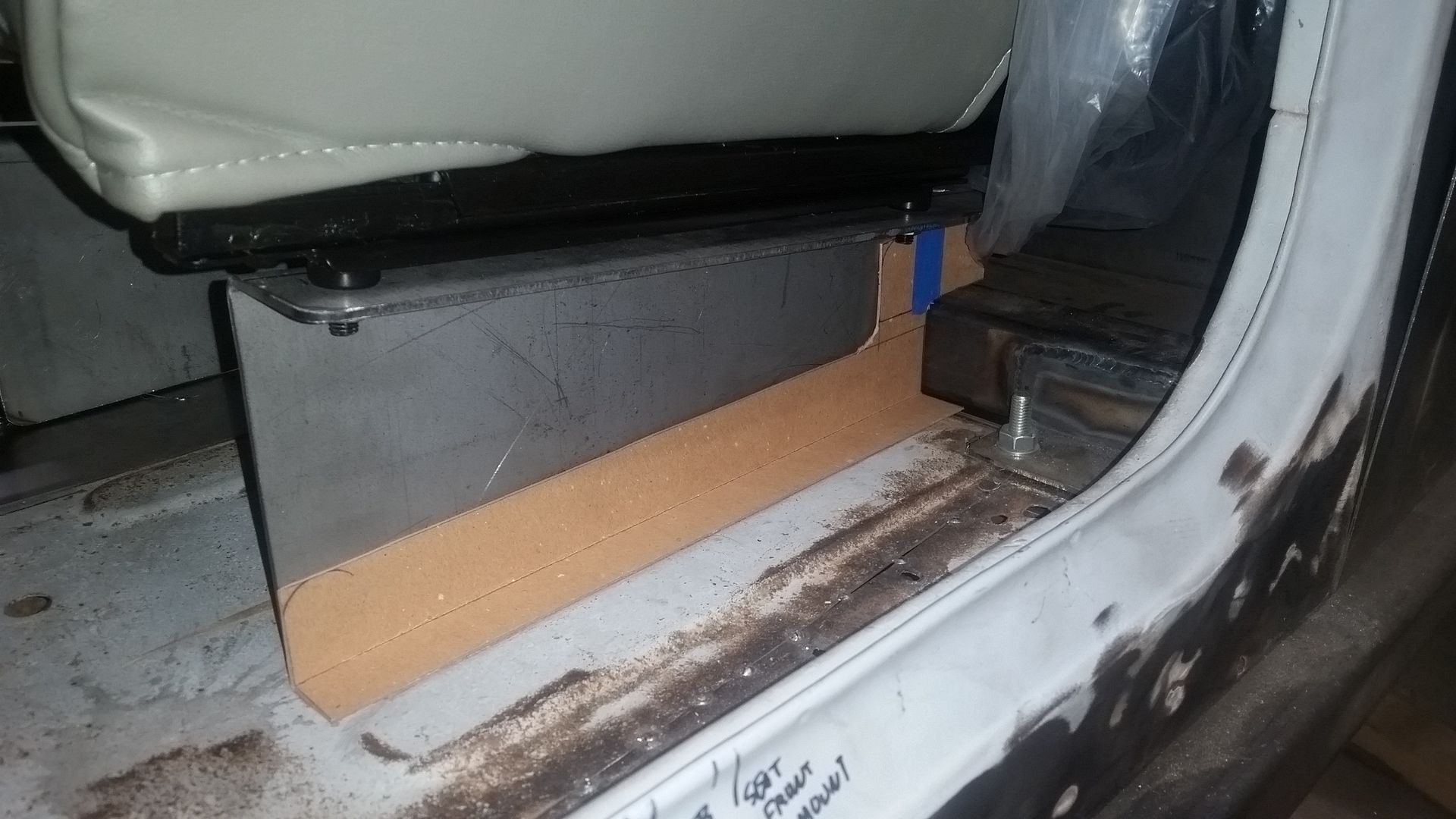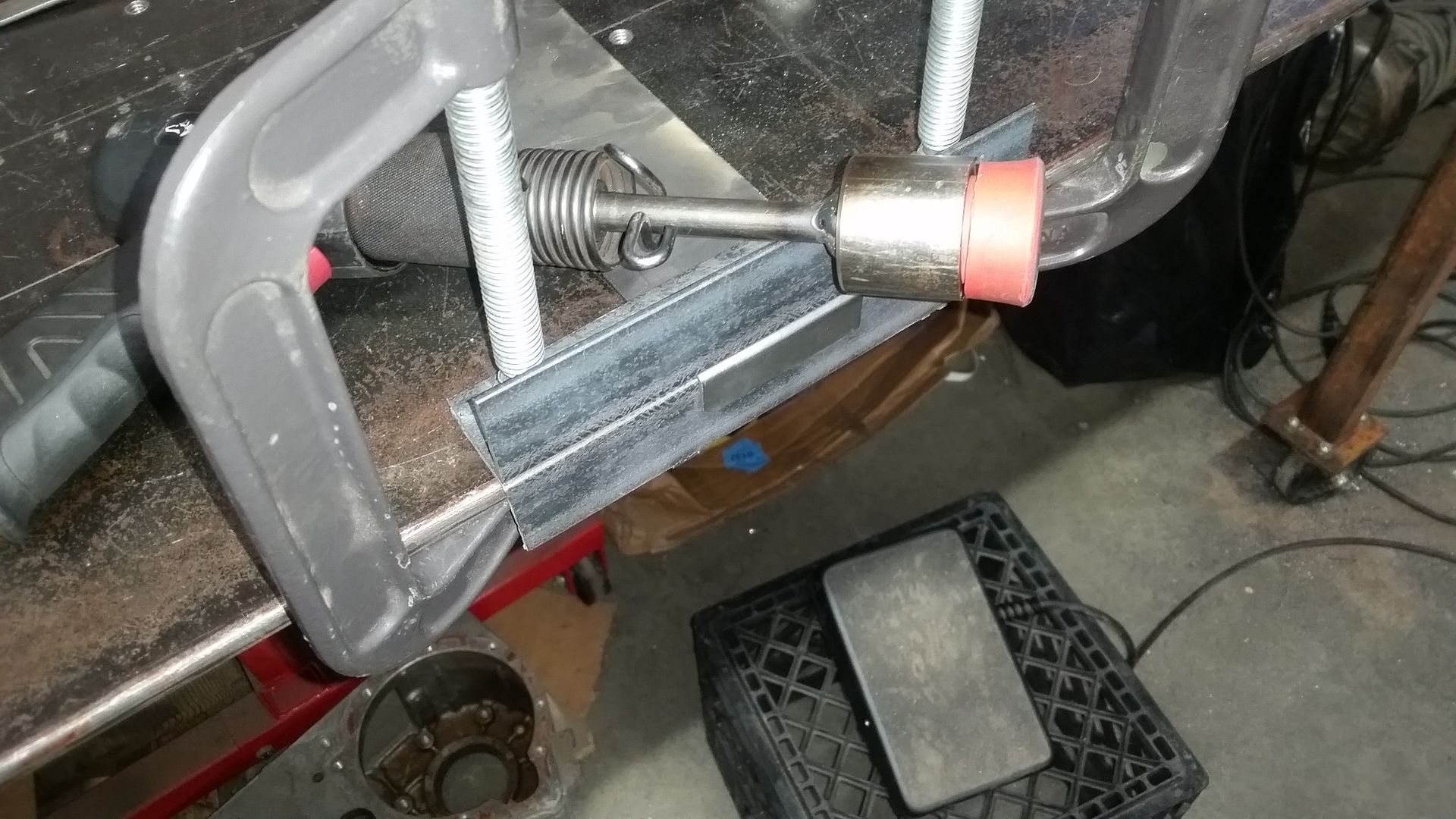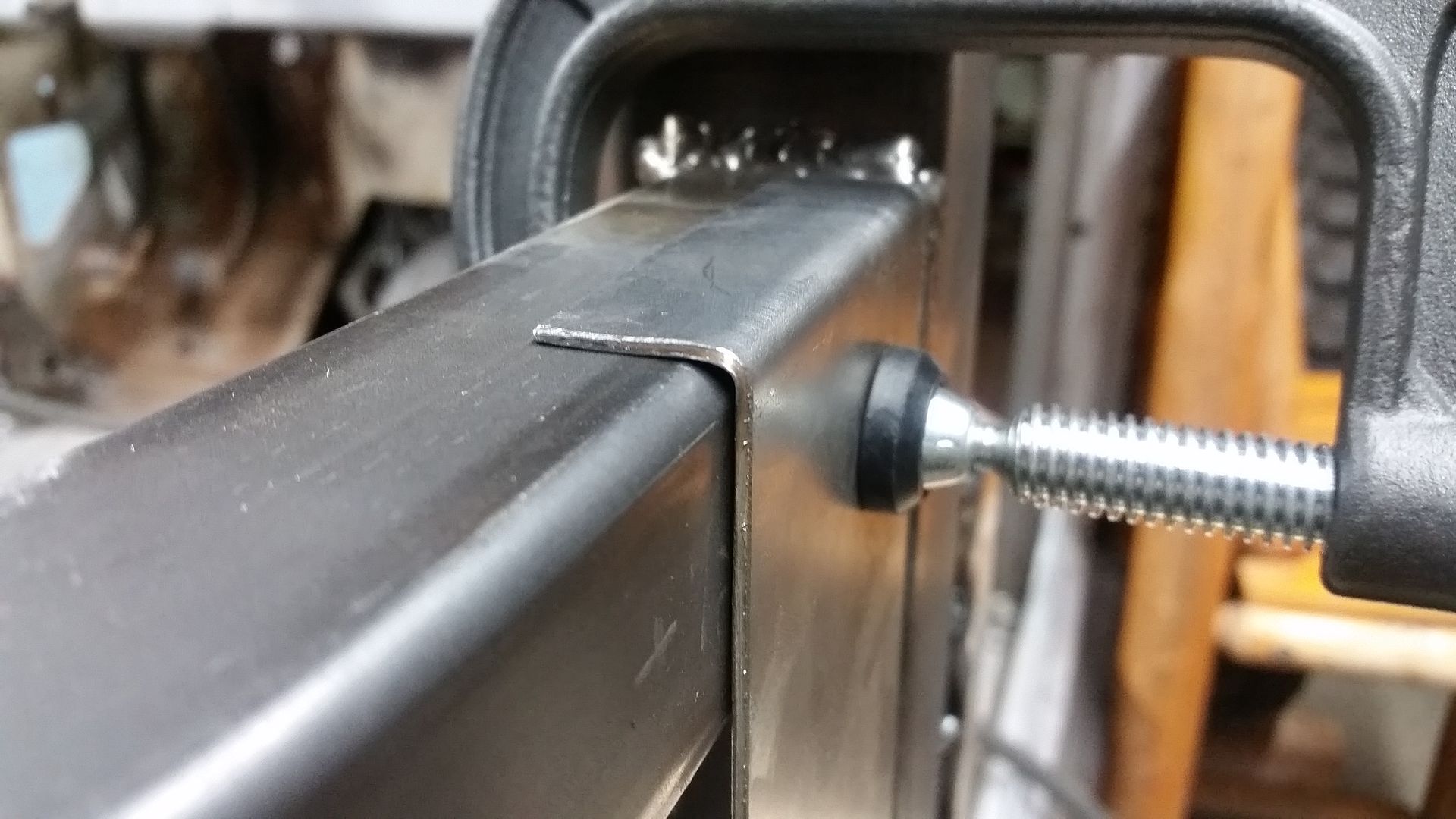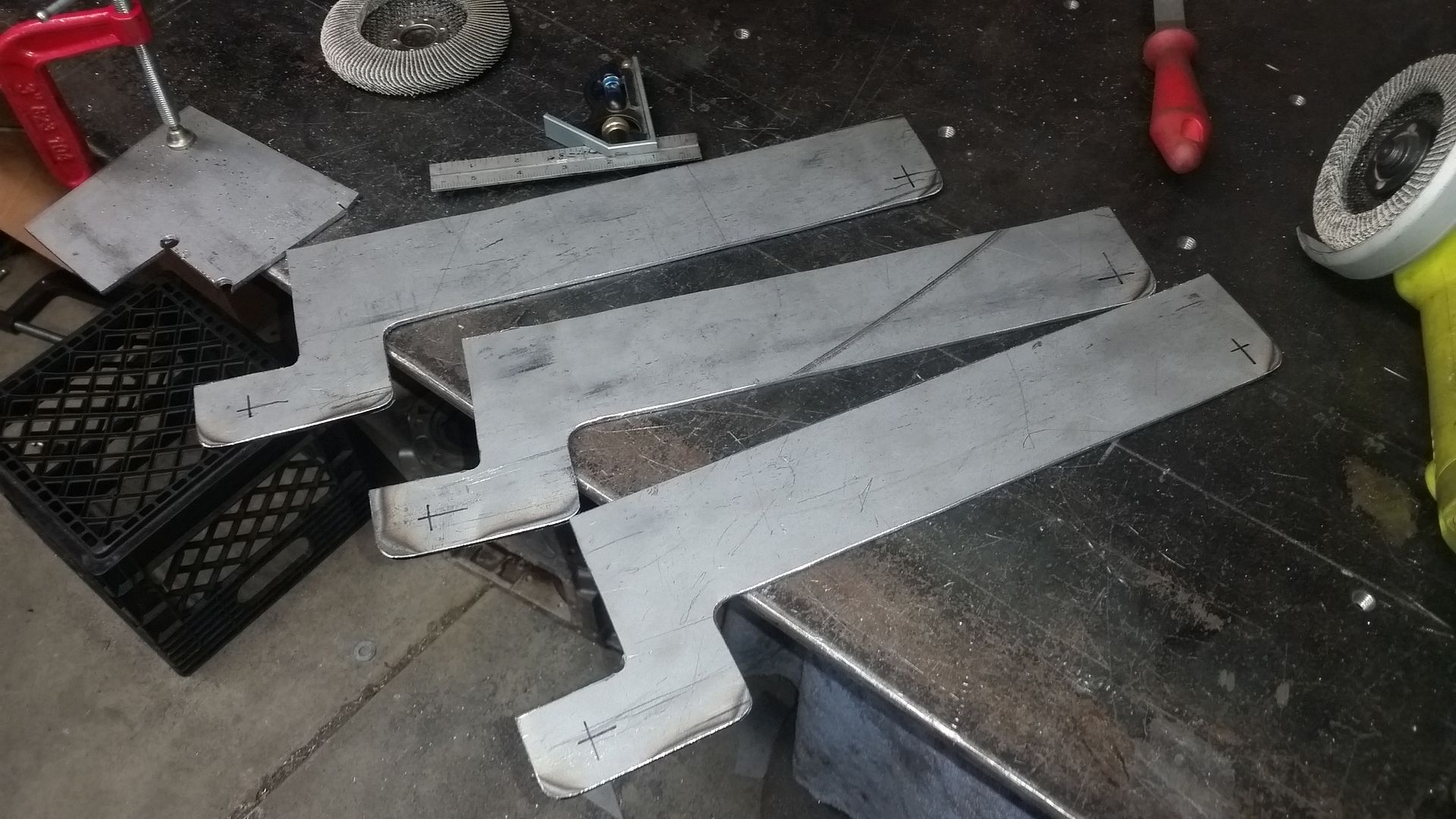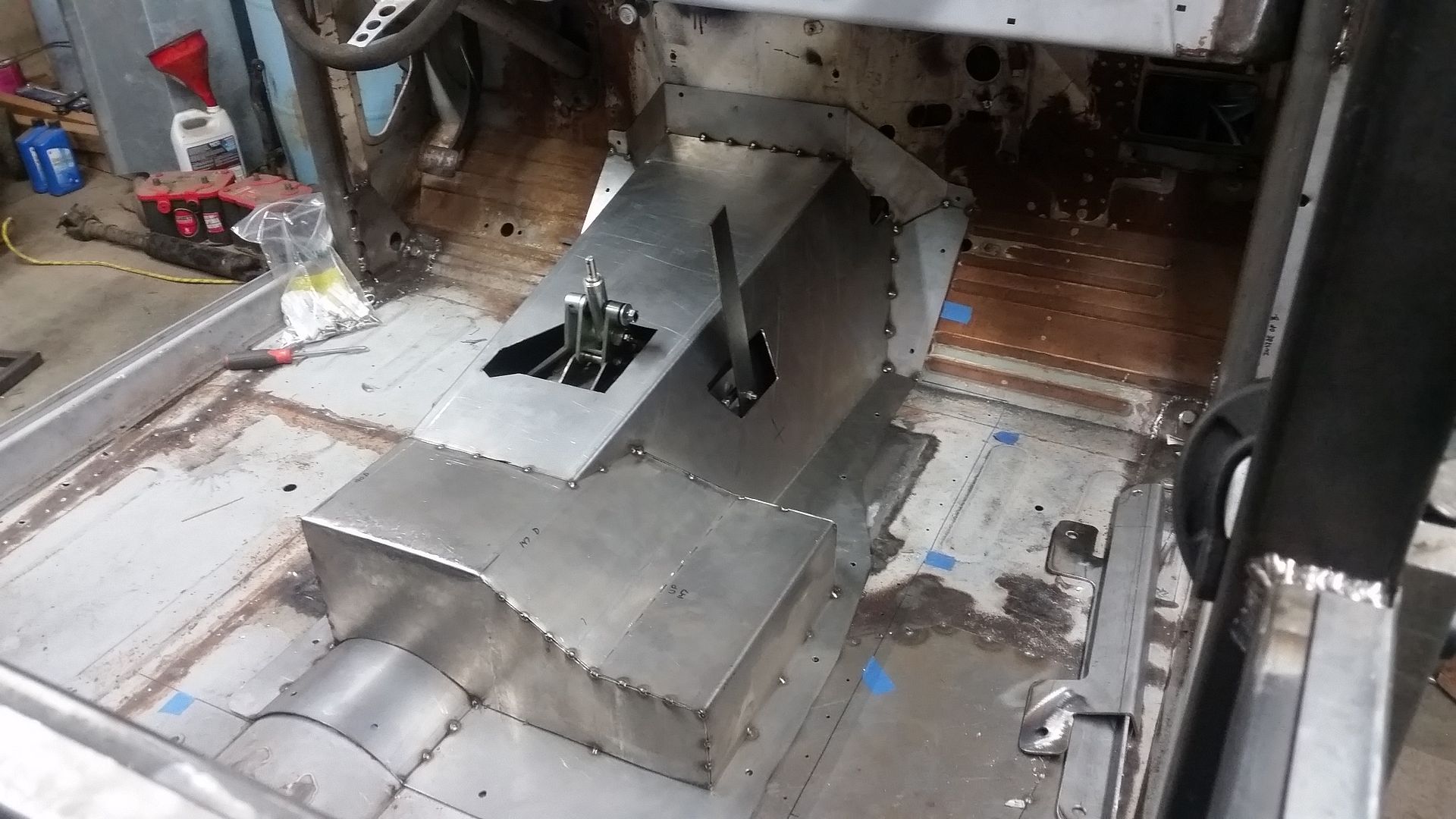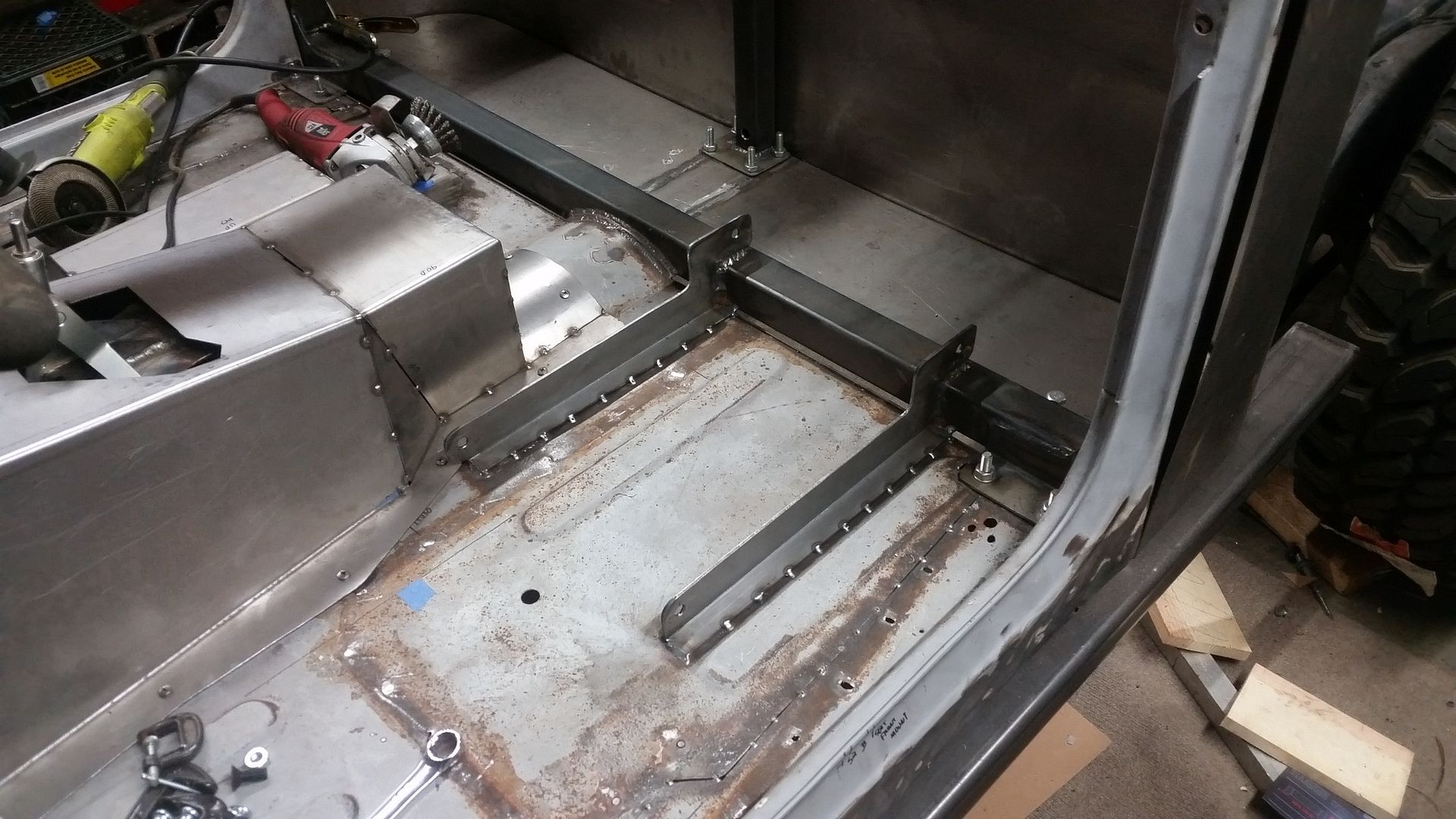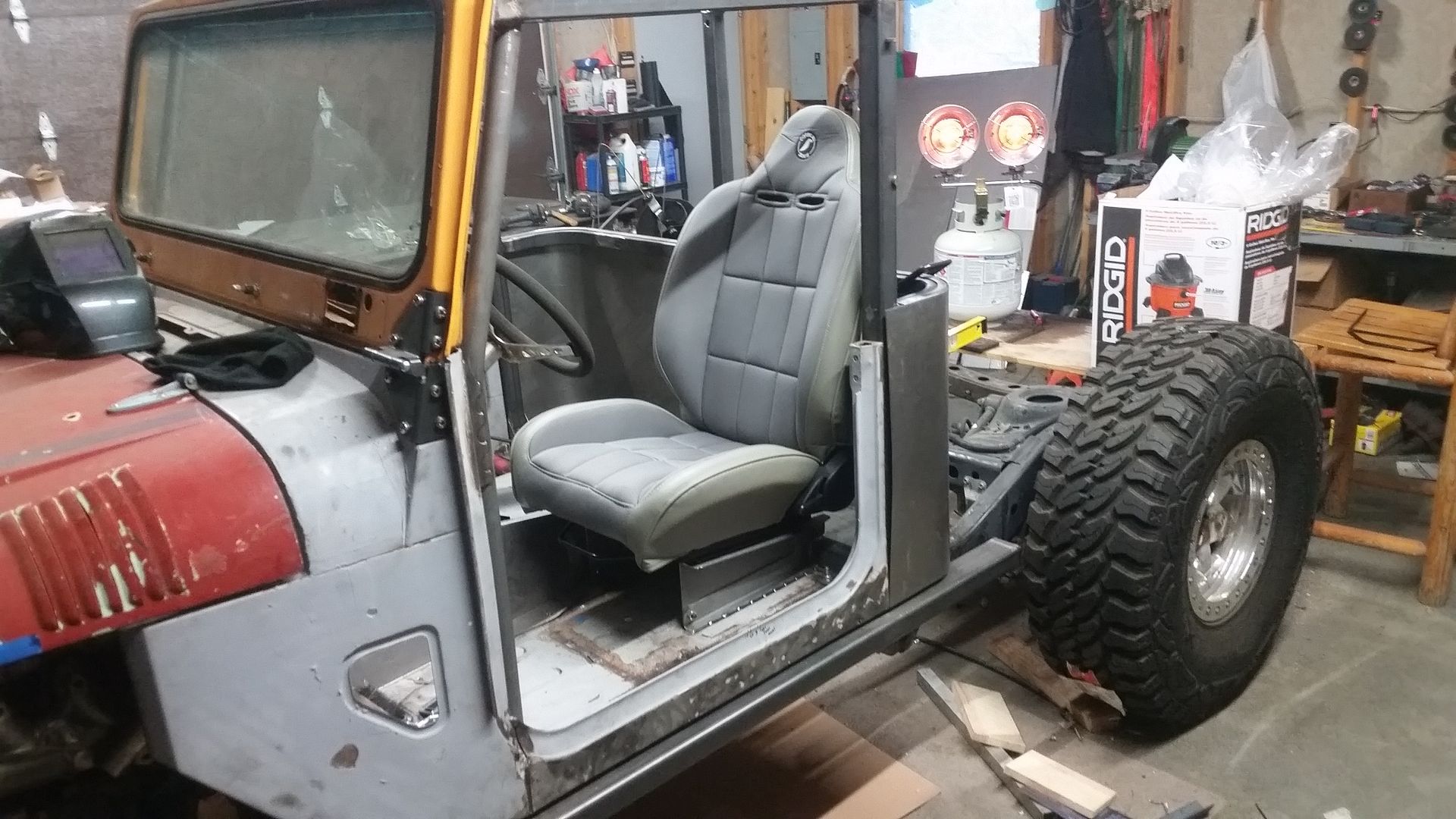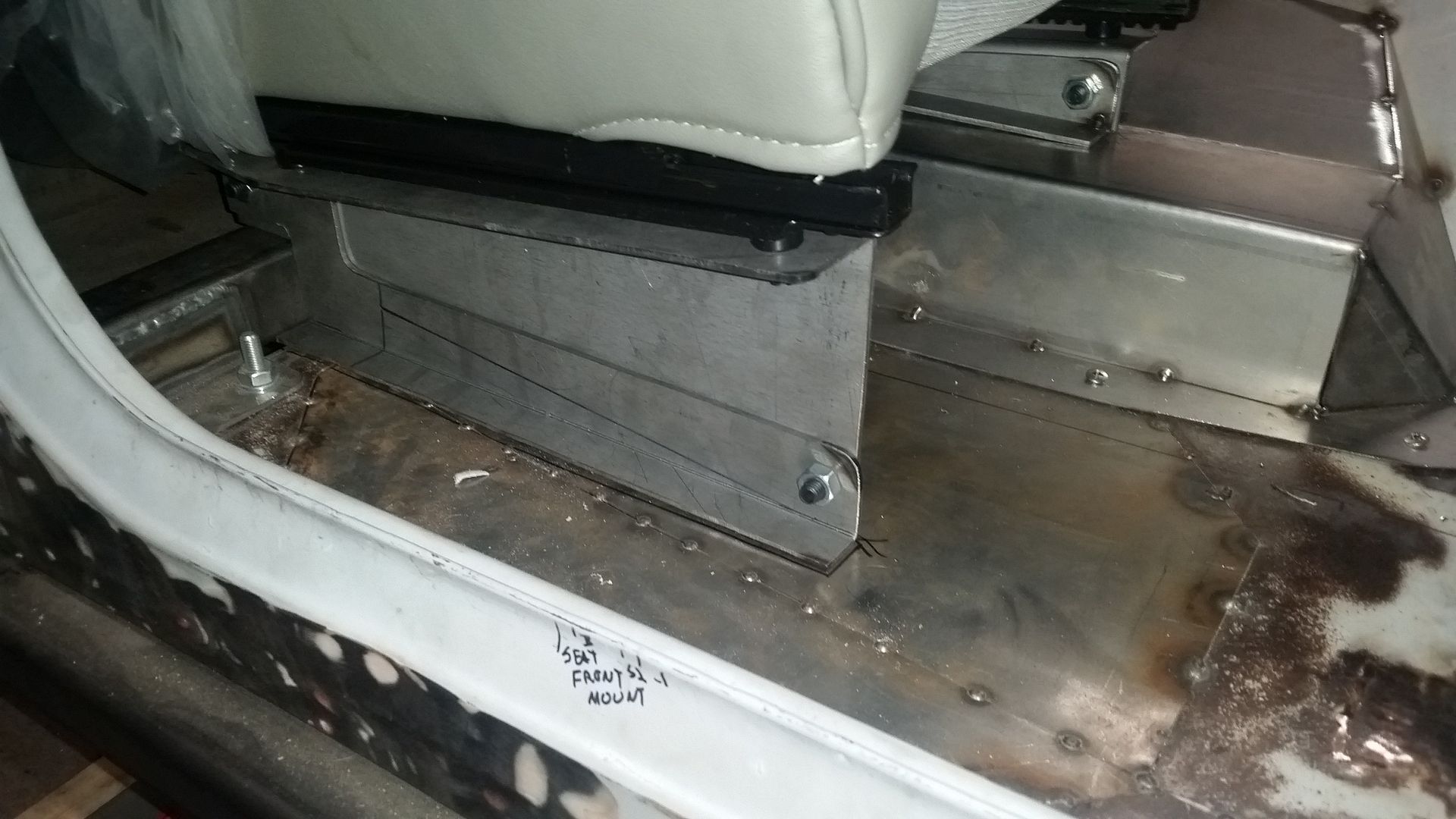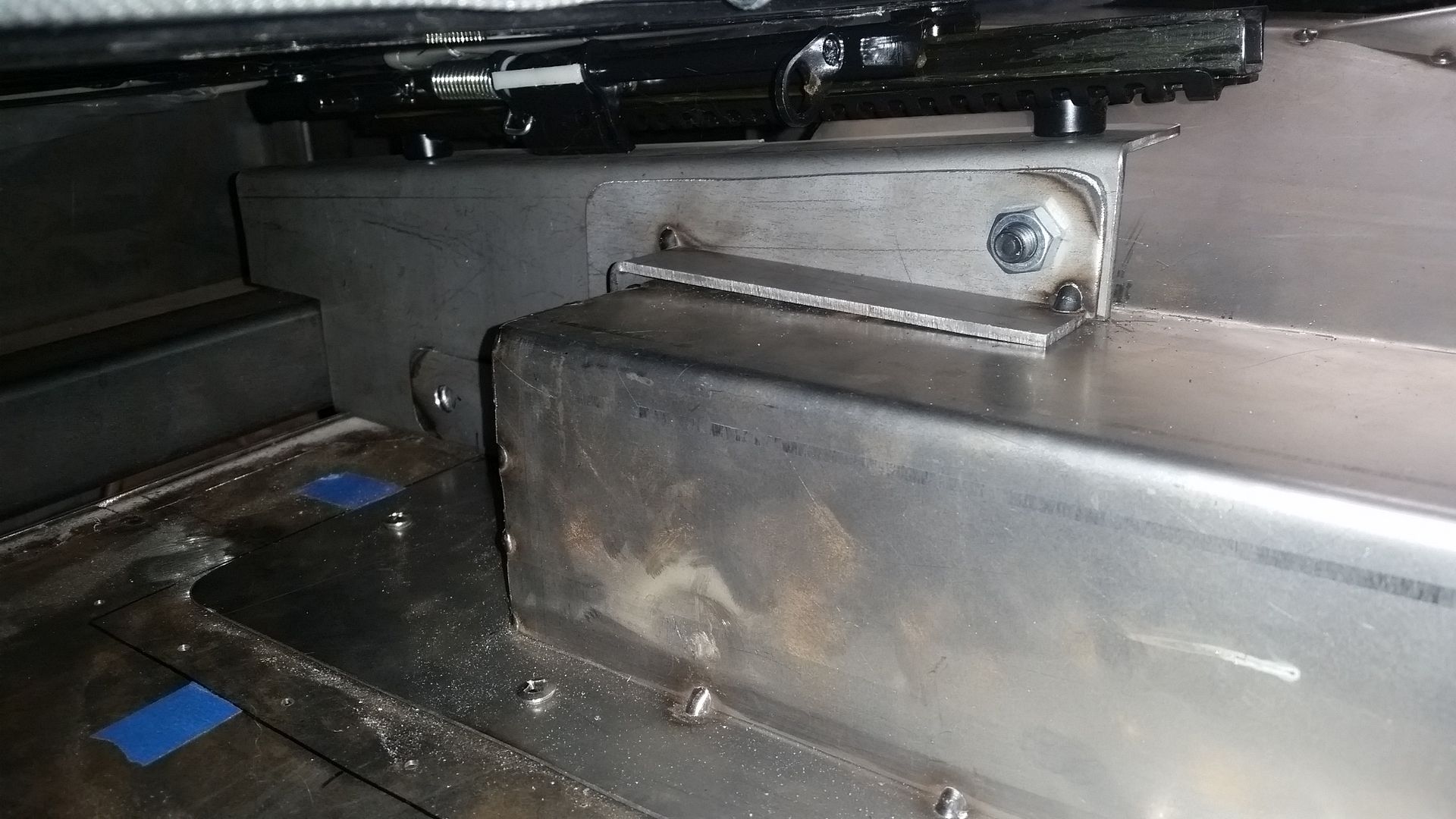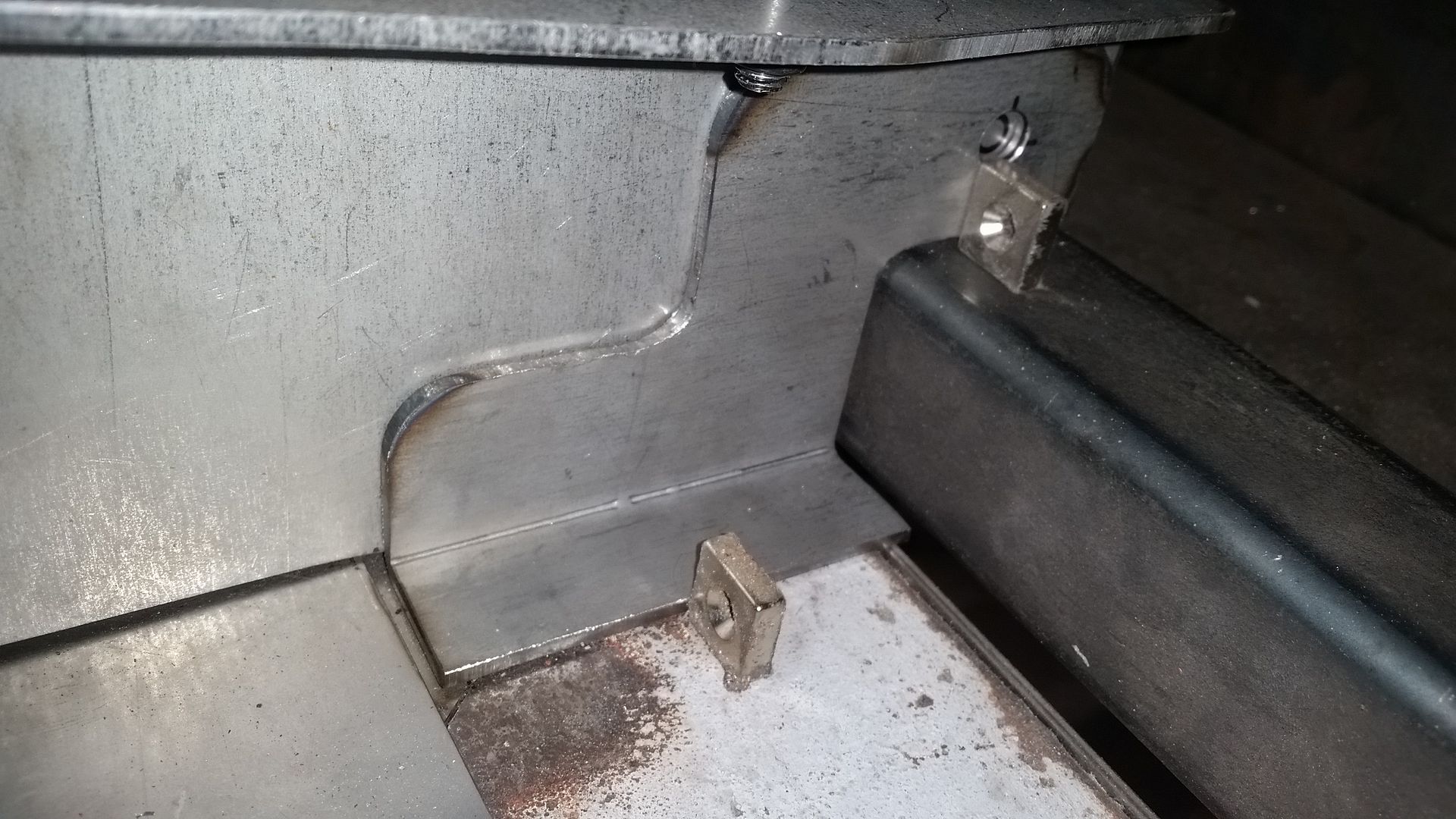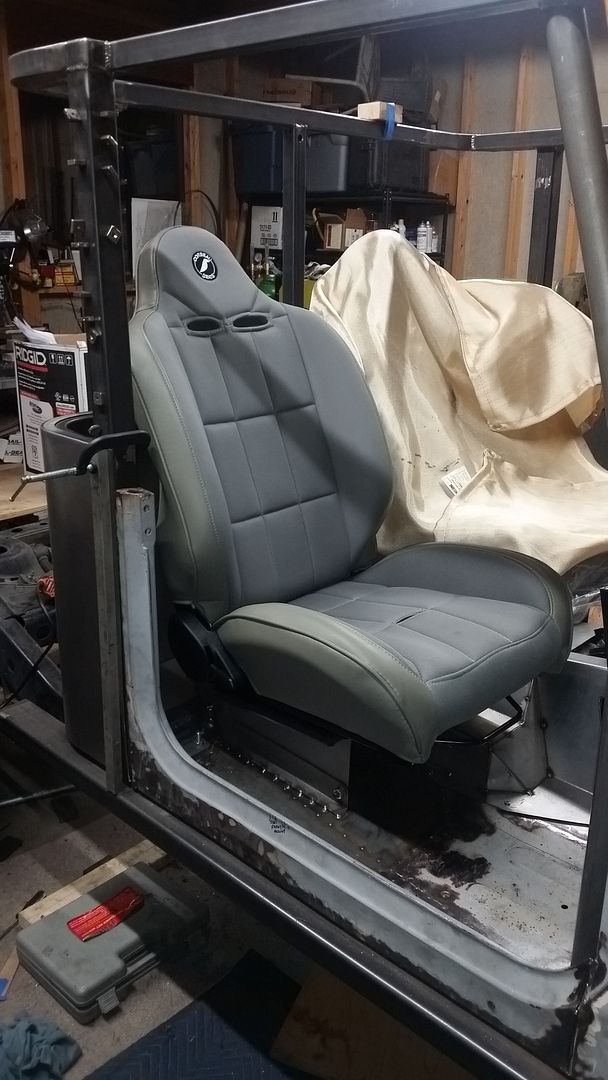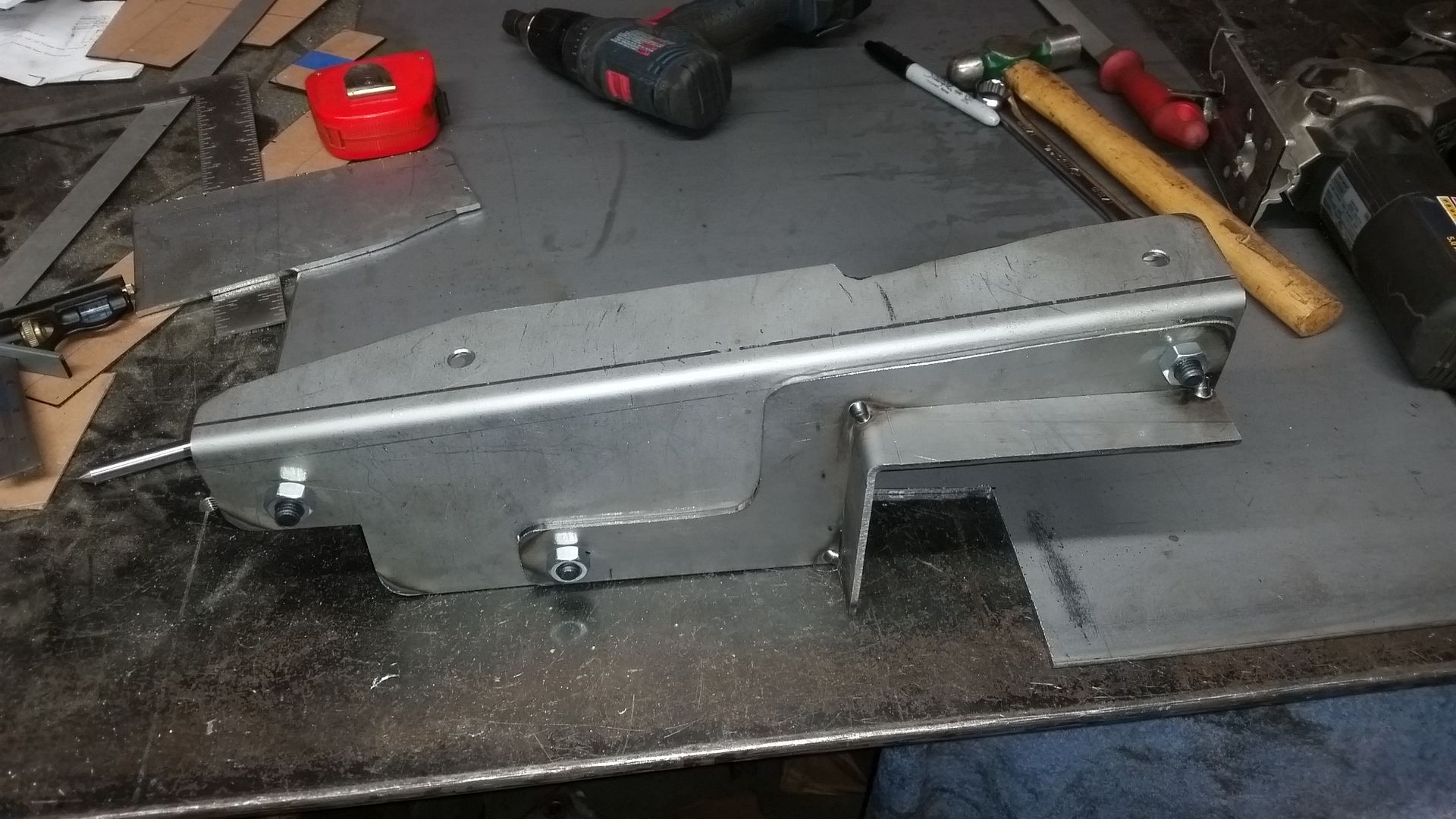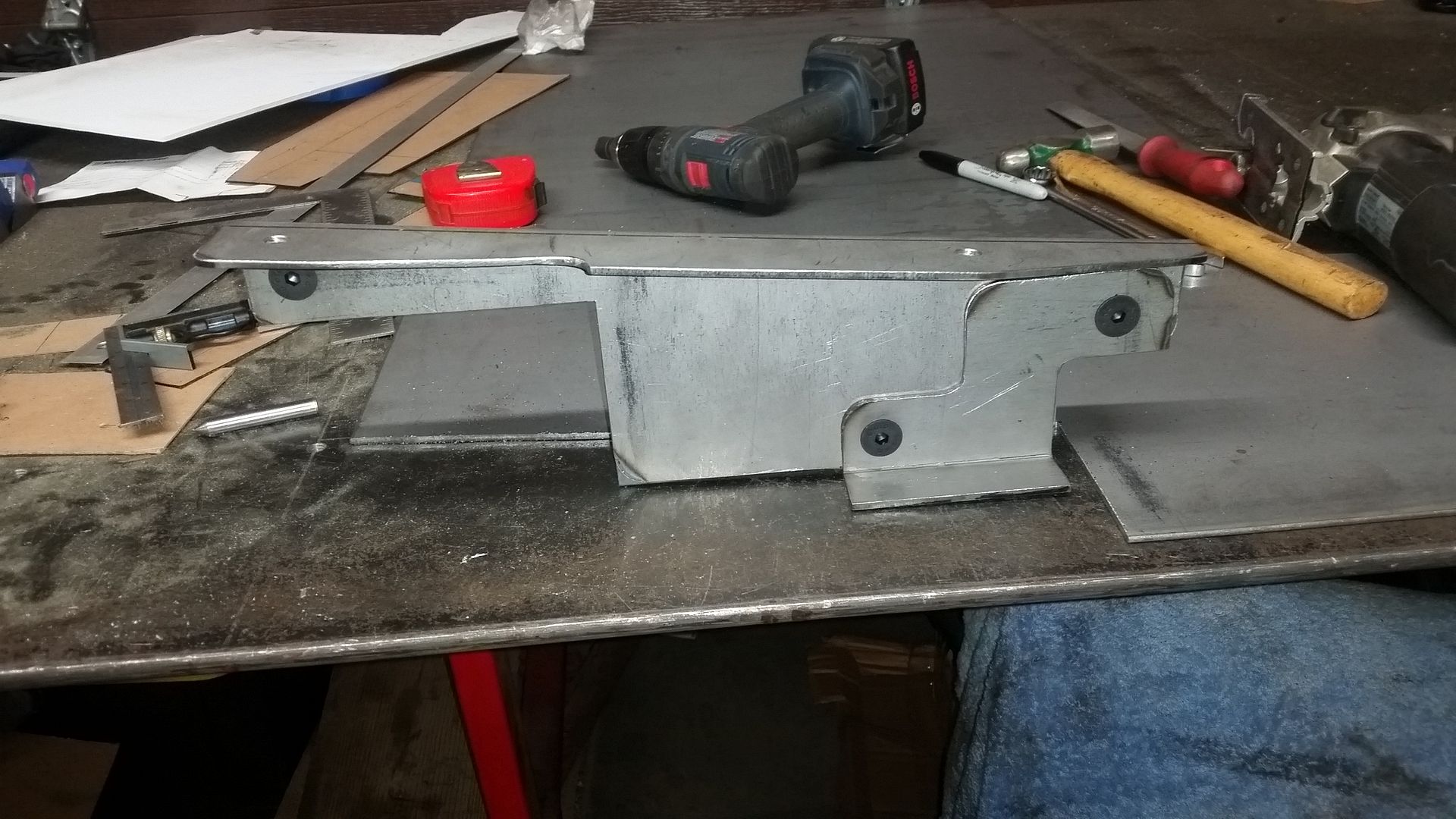Metcalf
Expedition Leader
My evening progress...
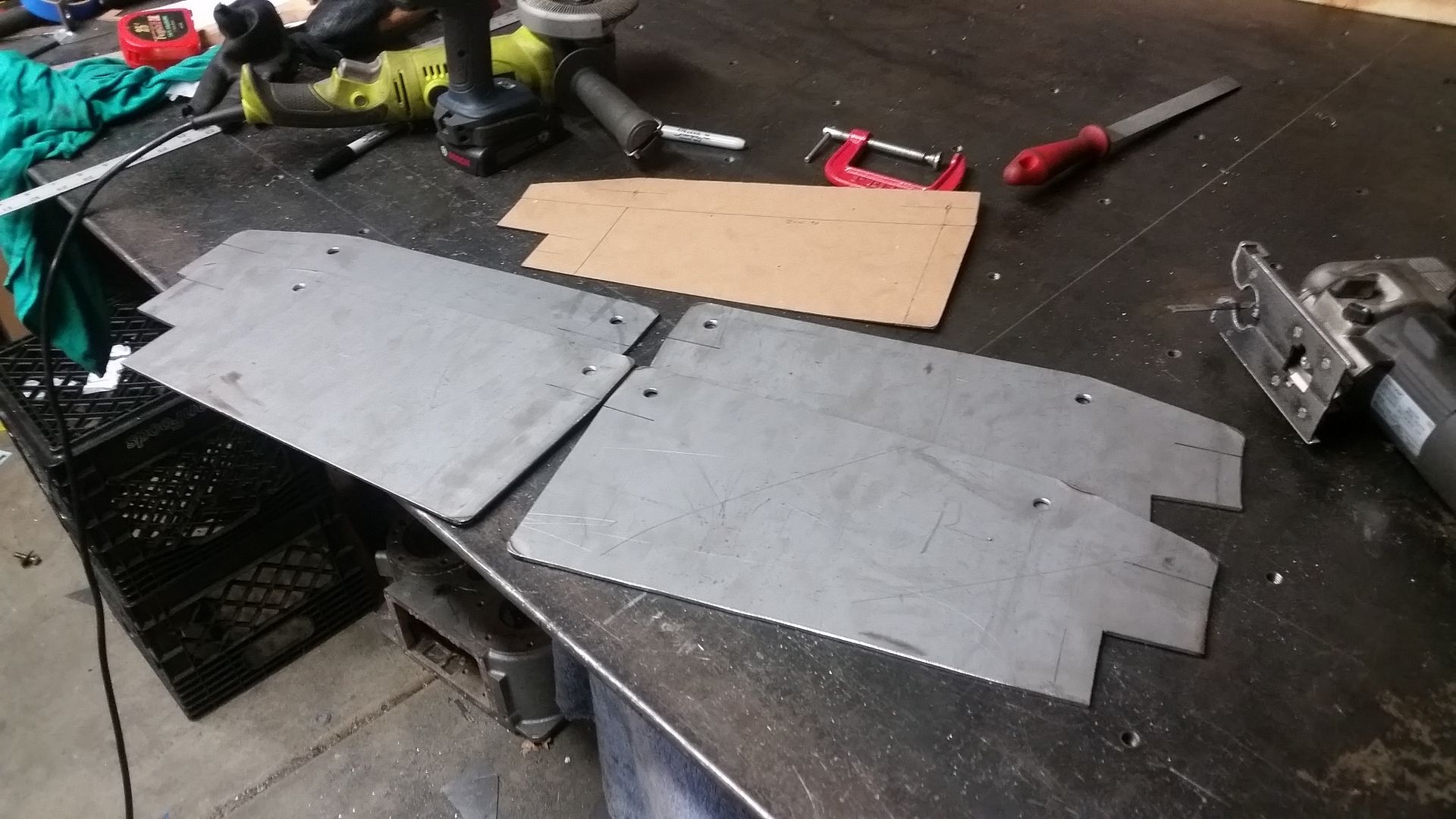
I put the seats back in and set them in place with the complete tunnel so I could pattern out the brackets. It wasn't as simple as I thought it was going to be. There are a few places where the seat slider is pretty tight on things.
I was just going to make a big U-shape bracket that was going to bolt to the seat, but that would have put the legs of the bracket outboard a bit too far. I decided to do individual L-shape brackets that will bolt the the seat mounts but the vertical leg of the bracket will be to the INSIDE of the seat. This moves the leg away from the tunnel on the inside slider on both sides.
I decided to mount the seats at a 6 degree base angle. That should allow the seat to move up as it moves forward slightly. I don't like the way a flat seat bottom cushion feels anyway. I mounted the seats as low as practical. I can add a spacer between the slider and the seat if things are too low.
I will make a matching L-shape bracket that will basically mount to the floor pan. I will just weld those brackets in place. The rear mounting bolt for the seats will be on top of the B-pillar floor spreader. That should make the mounting system very strong without having add a lot more cage structure ( remember, not a racecar ).
The only complication is going to be the inside mount on the passenger seat over the transfer case hump. I think that bracket system is going to have a few more parts to allow the removal of the tunnel as intended. I will start with the same base bracket shape that matches the others, but I will have to take a BIG notch out of it for the t-case.

I put the seats back in and set them in place with the complete tunnel so I could pattern out the brackets. It wasn't as simple as I thought it was going to be. There are a few places where the seat slider is pretty tight on things.
I was just going to make a big U-shape bracket that was going to bolt to the seat, but that would have put the legs of the bracket outboard a bit too far. I decided to do individual L-shape brackets that will bolt the the seat mounts but the vertical leg of the bracket will be to the INSIDE of the seat. This moves the leg away from the tunnel on the inside slider on both sides.
I decided to mount the seats at a 6 degree base angle. That should allow the seat to move up as it moves forward slightly. I don't like the way a flat seat bottom cushion feels anyway. I mounted the seats as low as practical. I can add a spacer between the slider and the seat if things are too low.
I will make a matching L-shape bracket that will basically mount to the floor pan. I will just weld those brackets in place. The rear mounting bolt for the seats will be on top of the B-pillar floor spreader. That should make the mounting system very strong without having add a lot more cage structure ( remember, not a racecar ).
The only complication is going to be the inside mount on the passenger seat over the transfer case hump. I think that bracket system is going to have a few more parts to allow the removal of the tunnel as intended. I will start with the same base bracket shape that matches the others, but I will have to take a BIG notch out of it for the t-case.

